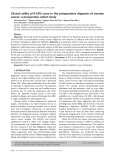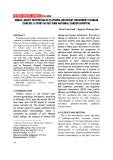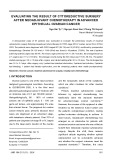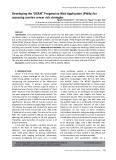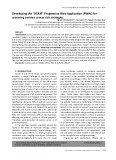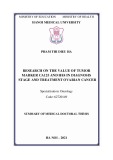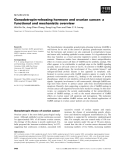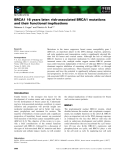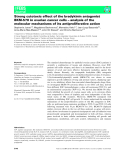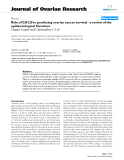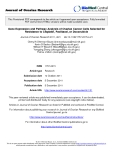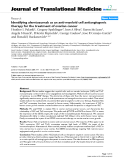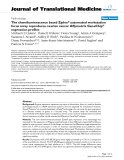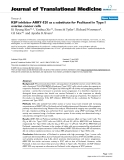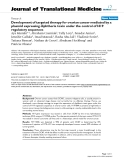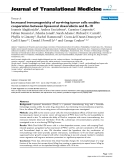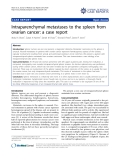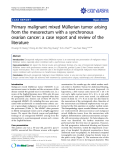
VIETNAM MEDICAL JOURNAL
34
SINGLE-AGENT TOPOTECAN IN PLATINUM-RESISTANT RECURRENT OVARIAN
CANCER: A STUDY IN VIET NAM NATIONAL CANCER HOSPITAL
Pham Tuan Anh1 , Nguyen Phuong Anh1
ABSTRACT5
Platinum-based doublet chemotherapy is still
supposed as standard regimen in ovarian cancer.
However, the rate of relapse or refractory is also
very high and vary from 80-85% with stage III-
IV ovarian cancer [1]. The prognosis of
platinum-resistant ovarian cancer (relapse or
refractory within 6 months after initial
treatment) has a median survival of 9–12 months
and less than 15% respond to subsequent
chemotherapy [2]. Thesedays, there are several
agents were introduced to control this disease
such as Docetaxel, Etoposid, Gemcitabine,
Liposomal doxorubicin with overall response
rate vary from 12-27% [3] [4] [5]. The objective
of this study was to evaluate response and
toxicity of 5-day Topotecan chemotherapy in
women with primary and secondary platinum-
resistant epithelial ovarian cancer.
Keyword: Topotecan, Ovarian Cancer,
Platinum-Resistant.
I. INTRODUCTION
Ovarian cancer is the second most
common gynecologic malignancy. According
to Globocan 2018, there are around 295,414
new cases and 184,799 deaths of ovarian
cancer annually [6]. The primary treatment
for ovarian cancer is surgery combined with
platinum-based chemotherapy, which is
considered the standard of care. Despite
initial therapy, the majority of women will
1 Optimal Clinical Care Department, National
Cancer Hospital of Viet Nam
Responsible person: Pham Tuan Anh
Email: phamtuananh@hmu.edu.vn
Date of receipt: 5/8/2024
Date of scientific judgment: 9/9/2024
Reviewed date: 7/10/2024
relapse and require retreatment. The rate of
relapse or refractory is also very high and
vary from 80-85% with stage III-IV ovarian
cancer [1]. The management of relapsed
disease is based upon the amount of time that
has elapsed between the completion of
platinum-based treatment and the detection
of relapse. Patients with a platinum-free
interval (PFI) of six months or longer are
considered to have "platinum-sensitive"
disease while patients with a PFI of less than
six months are considered to have "platinum-
resistant" disease. There are a number of
active treatment options available for women
with platinum-resistant ovarian cancer, and
the ideal treatment is not known. A Cochrane
systematic review of trials (n =1323) with
platinum-resistant ovarian cancer concluded
that topotecan, paclitaxel, and pegylated
liposomal doxorubicin (PLD) have similar
efficacy, but different patterns of side effects
[7]. We conducted this study to evaluate
response and toxicity of 5-day Topotecan
chemotherapy in women with primary and
secondary platinum-resistant epithelial
ovarian cancer.
II. PATIENT AND METHOD
This is the retrospective study, including
31 platinum-resistant recurrent ovarian
cancer patients at Viet Nam National Cancer
Hospital from February 2023 to February
2024. The criteria of inclusions were
histologically or cytologically confirmed
ovarian carcinoma, underwent plainum-based
doublet chemotherapy in the past, and now




